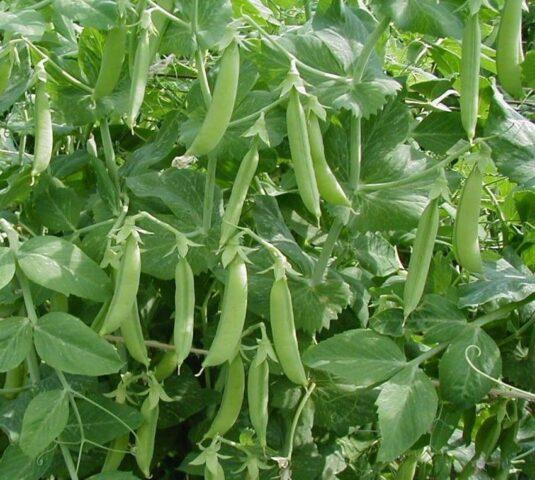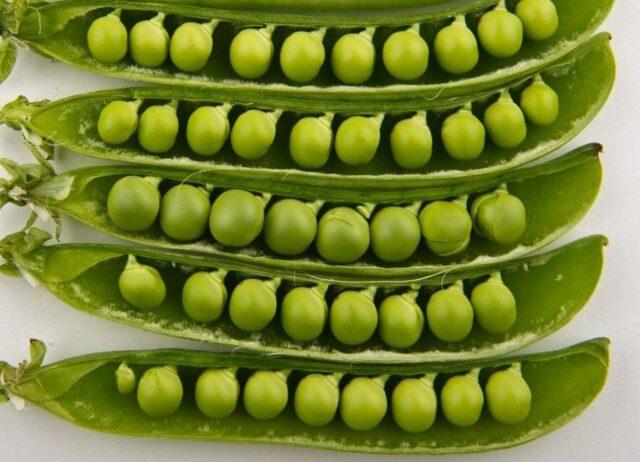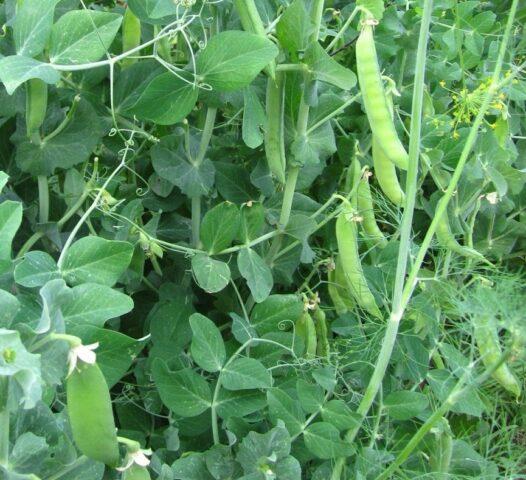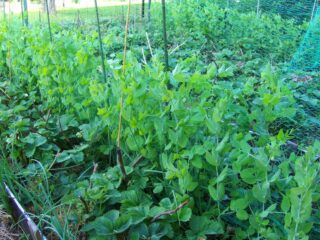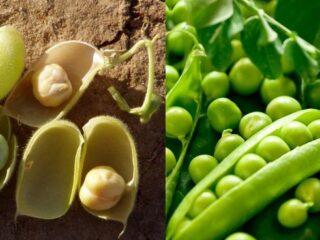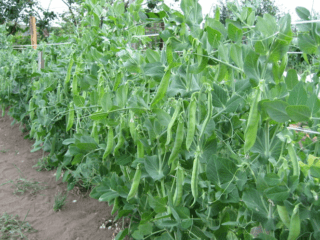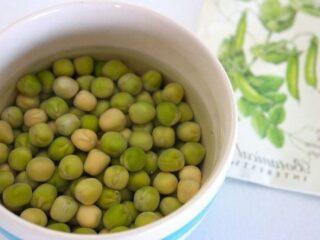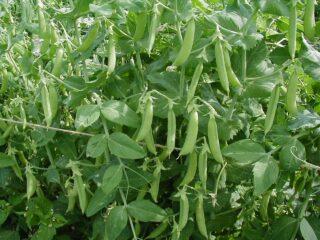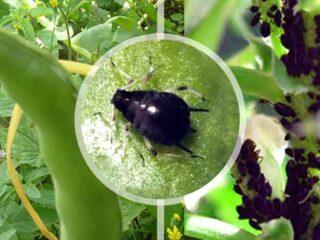Content
Even a novice gardener can easily grow peas in the Moscow region. This culture is cold-resistant and easy to care for. And its delicious sweet fruits in fresh and canned form are liked not only by adults, but also by children. However, to get a good pea harvest, you need to know the basic requirements of the crop, as well as familiarize yourself with the simple rules of agricultural technology. And then the result will exceed all expectations.
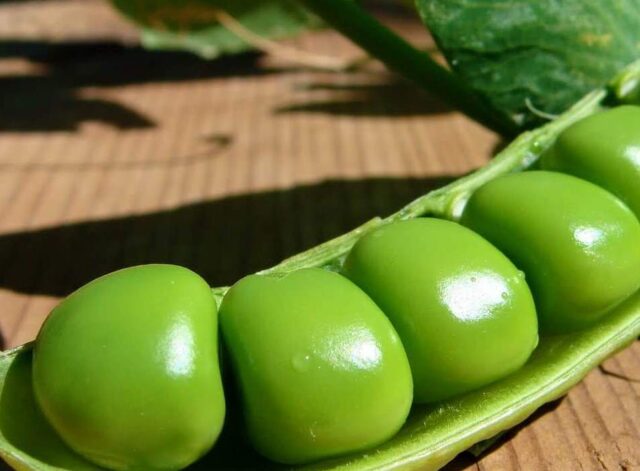
Peas are high in protein
The best varieties of peas for the Moscow region and the middle zone
There are two types of peas: shelling peas and sugar peas. The first is characterized by short stature and hard valves. However, the peas grow large and sweet. When ripe, they contain a lot of starch, so they boil well during cooking. Peeling species are characterized by increased resistance to unfavorable external factors, and their cultivation does not cause much trouble for the gardener.
The second type of pea is characterized by tallness.Its bushes need to be tied up to preserve the commercial quality of the crop. A distinctive feature of sugar peas is the soft shells of the beans, which allows them to be used as food, just like peas. However, sugar species are characterized by increased demands on soil fertility and growing conditions and are less resistant to pests and diseases.
Pea varieties also differ in terms of ripening time. They are early, middle and late. Taking into account the climate of the Moscow region, you should choose peas with a short growing season.
The best pea varieties for the Moscow region, which are suitable for open ground:
- Alpha. Early ripening peeling variety. The growing season is 46-53 days after emergence. Plants reach a height of 50-70 cm. The flowers are white, formed in twos at a time. The beans are dark green in color, 7-8 cm long. Each of them contains from five to nine peas. The taste is sweet. It has a high content of starch and ascorbic acid. The yield of the variety is 0.4 kg per 1 sq. m.
Alpha is characterized by friendly yield
- Children's sugar. Sugar snap peas. Its doors do not have a parchment layer. The growing season in the Moscow region is 42-43 days. The height of the plant is 75-80 cm. The length of the pods is 8-9 cm. 9-11 peas are formed in each of them. The yield of the variety is 0.7-1.2 kg per 1 sq. m.
Children's sweet suitable for fresh consumption and canning
- Misty. Early ripening peeling variety. The growing season is 39-56 days. The height of the plants reaches 45-50 cm. The beans are slightly curved and short.At technical maturity, the peas are dark green in color. They have a sweetish, pleasant taste.
The yield of green peas for the Misti variety is 42-46%
- Sphere. An early ripening variety of shelling peas. Its growing season in the Moscow region is 43-50 days. The beans grow up to 6-10 cm. Each of them contains 5-9 seeds. At the stage of technical maturity, the shade of peas is dark green. The variety is characterized by a high content of vitamins and starch.
The sphere has average resistance to fusarium
- Ambrosia. Sugar snap peas. The growing season in the Moscow region is 45-60 days. Plant height reaches 65-75cm. The length of the fruit is 10 cm, the shell does not have a parchment layer. Each produces 8-9 peas. The variety is suitable for fresh consumption and preservation. The taste is sweet. Ambrosia seeds are rich in proteins and sugar. The variety is demanding when it comes to watering.
Ambrosia tolerates transportation well and is suitable for freezing
Timing for planting peas in the Moscow region
Peas are a cold-resistant crop. And it can be planted as soon as the snow melts, and the soil thaws and warms up to +5 ° C to a depth of 10 cm. In the conditions of the Moscow region, this usually happens in late April, early May.
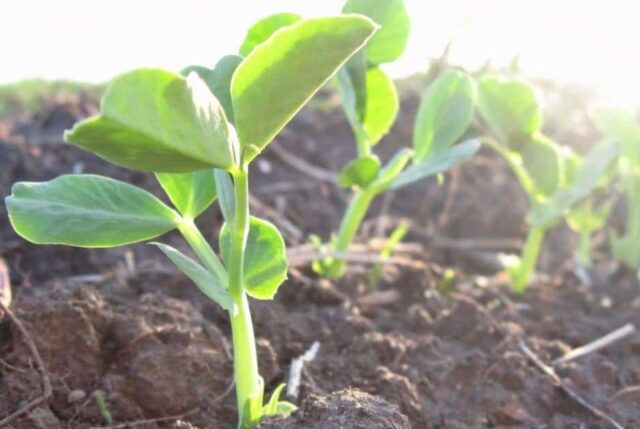
Peas can withstand frosts down to -6 °C, which is important for the Moscow region
Planting peas in open ground in the Moscow region
The development of plants and their level of productivity directly depends on how correctly planting is carried out in the conditions of the Moscow region. This procedure includes several basic steps that must be followed. Otherwise, the end result may differ radically from the desired one.
Seed preparation
Before sowing seeds in the Moscow region, they need to be soaked and then germinated. This will make it possible to significantly speed up the emergence of seedlings and immediately discard unproductive specimens.
You can soak the seeds in plain water for 10-12 hours or in a solution of boric acid at the rate of 1 g of the drug per 5 liters of water at a temperature of 40 ° C for five minutes. Experienced gardeners recommend using the second option, since in this case the seeds become resistant to the nodule weevil at an early stage of development.
To germinate pea seeds in the future, you need to wrap them in damp cotton cloth, and then put a plastic bag over the parcel. The seeds should be kept in a shaded place at a temperature of +24-26 °C. They are inspected daily and the moisture content of the fabric is monitored. When sprouts appear, you can sow in open ground.
Selecting a location
To successfully grow peas in the Moscow region, you need to choose the right place. This crop requires good light and fertile, well-drained soil. In this case, the site must be protected from drafts and gusts of wind.
The best option in the conditions of the Moscow region is to plant peas on the eastern and western sides of the garden plot in loam with a neutral acidity level. At the same time, it is important that in the previous season a crop grew in this place and received a sufficient amount of nutritional components.
Recommended precursors for peas:
- roots;
- cucumbers;
- tomatoes;
- cabbage;
- potato.
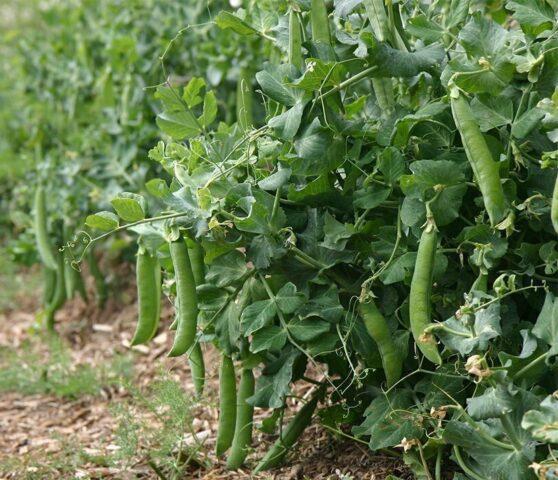
All legumes enrich the soil with nitrogen
Soil and bed preparation
Before planting peas in the Moscow region, you should prepare the site. To do this, you need to dig it up and remove all the weeds. And then carefully level the surface. It is necessary to add humus to the soil if the soil fertility is insufficient. In this case, you should add it at the rate of 5 kg per square meter. m.
Sowing technology
Planting peas does not require complicated steps. It is recommended to carry it out at any time of the day.
Sowing technology:
- Make furrows 2-3 cm deep.
- Water them generously.
- Place the sprouted seeds at a distance of 5 cm from each other.
- Sprinkle them with soil.
- Compact the soil surface.
- Cover the bed with spandbond to protect the seeds from birds and create favorable conditions.
If peas are planted in the Moscow region with sufficient soil moisture, then there is no need to pre-water the bed.
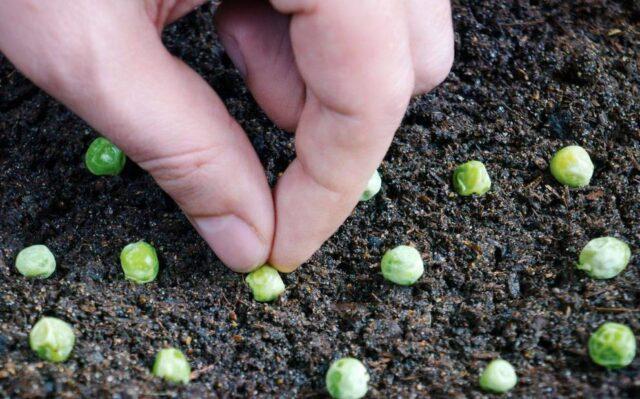
You can plant peas in their original place only in the fourth year.
Caring for peas in open ground
When growing this legume in the Moscow region, it is necessary to provide the plant with proper care. It includes several basic rules that will have to be followed.
Watering and fertilizing
Peas are a moisture-loving crop; in the absence of rain for a long time, they need to be watered regularly. In the Moscow region, moistening should be carried out once every 3-5 days by wetting the soil by 10 cm. To do this, use settled water.
During the flowering period, peas need potassium. Therefore, at this time it is necessary to feed it with wood ash.To do this, you should prepare a hood based on it. It is necessary to pour 200 g of wood ash into 1 liter of hot water and leave for 24 hours. At the end of the waiting period, increase the total volume of liquid to 10 liters. Pour 500 ml of nutrient solution under each plant.
Tying up
It is recommended that immediately after planting you take care of the supports for the peas. It is necessary to install pegs along the edge of the rows and stretch a rope between them. As the bushes grow, they need to be tied up regularly. This will allow them to fully develop and preserve the commercial properties of the pods.
Loosening the soil
After each watering, loosen the soil at the base of the plants to maintain air access to the roots. You should also remove growing weeds regularly.
Pest and disease control
Peas have increased resistance to diseases. But if dark spots or white plaque appears on the leaves, the plant should be treated with fungicides, not forgetting the waiting period before harvesting.
Among the pests, damage to the plant can be caused by the pea moth, the larvae of which make their way inside the pods, and by aphids, which feed on the sap of the plant.
To protect peas, when planting, add white mustard seeds to the furrows, the smell of which repels pests.
And if signs of damage appear, spray the plants with a solution of tomato tops. To prepare it, you need to pour 10 liters of warm water over the tomato shoots and leaves and leave for 24 hours. After this, strain.
Harvest and storage
Finished pods can be collected on the plant 2-4 weeks after the start of flowering. In the conditions of the Moscow region, the first harvest can be carried out at the end of May, in the first ten days of June.In the future, the beans should be removed every three days so that they do not overgrow and retain their sweet taste and softness.
The crop must be processed within 2-4 hours after harvesting. Drying, freezing and preservation are suitable for this.
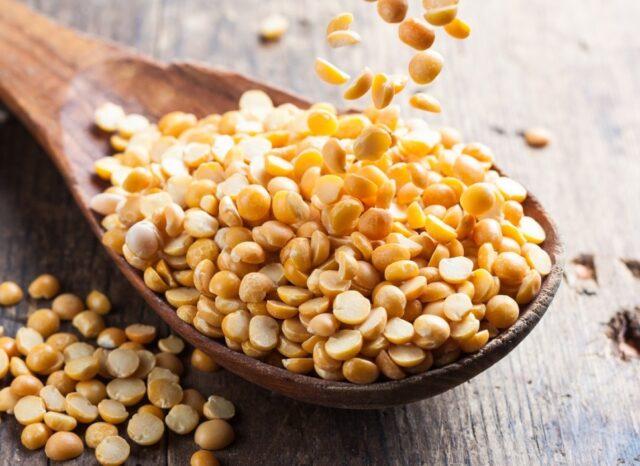
Dried peas should be stored in an airtight glass container
Conclusion
Growing peas in the Moscow region is not so difficult if you provide this legume with proper care. To do this, you should follow the basic recommendations and not overdo it with fertilizing. Indeed, in the case of peas, a lack of nutritional components is much better than their excess.
